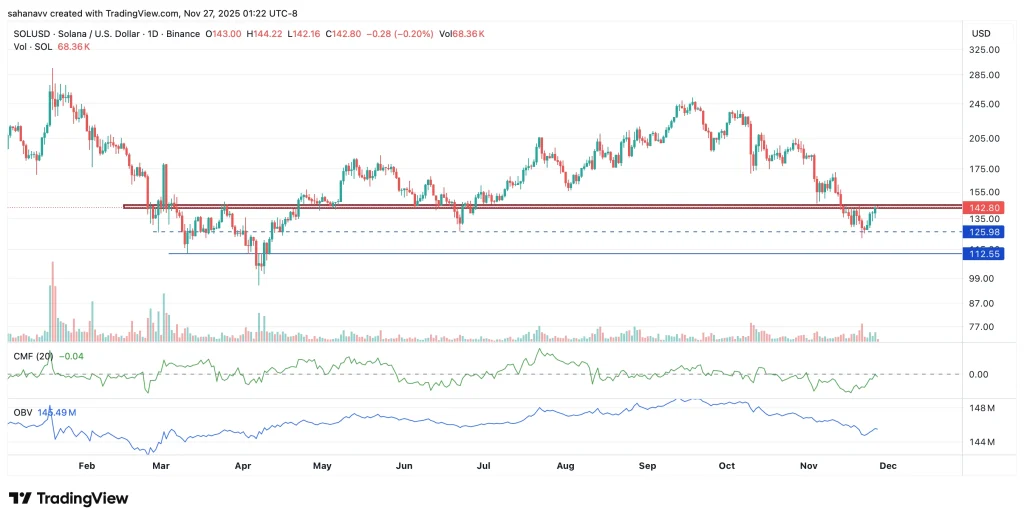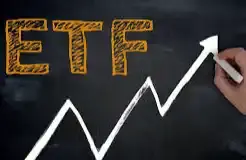Stablecoin yields collapse, marking the end of the high-yield DeFi era
The cryptocurrency sector must adapt to life "after the party."
The cryptocurrency sector must adapt to life "after the party."
Written by: Justin Alick
Translated by: Saoirse, Foresight News
Is the era of easily earning returns from cryptocurrencies truly over? A year ago, depositing funds into stablecoins seemed like having a "cheat code"—offering generous interest with (supposedly) no risk. Now, that illusion has burst. Opportunities for stablecoin yields across the crypto sector have shrunk dramatically, leaving DeFi lenders and yield farmers facing near-zero returns. Where has the "golden goose" that brought "risk-free APY" gone? Who turned yield farming into a "ghost town"? Let's dive into the reasons behind the "decline" of stablecoin yields—the outlook is grim.
The Dream of "Risk-Free" Returns Has Shattered
Remember those good old days (around 2021)? Back then, various protocols handed out double-digit APYs for USDC and DAI as if they were candy. Centralized platforms promised 8%-18% stablecoin yields, ballooning their assets under management (AUM) to astonishing levels in less than a year. Even so-called "conservative" DeFi protocols offered over 10% returns on stablecoin deposits. It felt like we had cracked the financial code, as if "free lunch" really existed! Retail investors flocked in, convinced they had found the "magic" of earning 20% risk-free returns in stablecoins. As for the final outcome, we all know it now.
Fast forward to 2025: the "risk-free yield dream" is on its last legs. Stablecoin yields have dropped to low single digits, or even zero, crushed by a "perfect storm" of adverse factors. The promise of "risk-free returns" was always unrealistic, and now it has been completely shattered. The "golden goose" that DeFi once pinned its hopes on has turned out to be a "headless chicken."
Token Crashes, Yields Plummet
The first "culprit" is obvious: the crypto bear market. Falling token prices have severely weakened the "fuel source" for yields. The DeFi bull market was always propped up by high token prices—you could get 8% stablecoin yields because protocols could issue and distribute governance tokens that were soaring in value. But when those tokens crash by 80%-90%, the "yield feast" comes to an abrupt halt. Liquidity mining rewards either dry up or become nearly worthless. (For example, Curve's CRV token once approached $6, but now hovers below $0.5—using it to subsidize liquidity provider returns is no longer realistic.) In short: no bull market, no "free lunch."
Along with falling token prices comes a massive outflow of liquidity. DeFi's total value locked (TVL) has shrunk dramatically from its peak. After reaching a high at the end of 2021, TVL plummeted by over 70% during the 2022-2023 crash. Billions of dollars in capital exited various protocols—either as investors cut their losses or as cascading failures forced liquidations. With half the capital gone, yields naturally shrank: fewer borrowers, lower trading fees, and much-reduced token incentives. The result: despite a slight rebound in 2024, DeFi's TVL (now more like "total value lost") still struggles to recover even a fraction of its former glory. When the "farmland" turns to desert, yield farming naturally yields nothing.
Risk Appetite? Almost Zero
Perhaps the most critical factor killing stablecoin yields is simple: fear. Crypto investors' risk appetite has hit rock bottom. After a series of "scares" in centralized finance (CeFi) and "rug pulls" in DeFi, even the most aggressive crypto players have chosen to "sit out." Both retail and whales have largely abandoned the once-popular "chasing high yields" game. Since the "crypto disaster" of 2022, most institutional capital has paused its crypto investments; retail investors who suffered losses have become extremely cautious. This shift in mindset is obvious: when an unreliable lending app can disappear overnight, why risk it all for a 7% return? "If something sounds too good to be true, it probably isn't"—this lesson has finally sunk in.
Even within DeFi, users only choose the safest investment options, shunning other strategies. Leveraged yield farming, once all the rage during "DeFi Summer," is now a niche play. Yield aggregators and pools are similarly deserted—Yearn Finance is no longer a hot topic on crypto Twitter. In short, no one wants to try complex "high-risk strategies" anymore. This widespread risk aversion is killing the once-generous returns that came from taking risks. No risk appetite, no risk premium. All that's left is a meager base rate.
Additionally, protocol-level changes must be considered: DeFi platforms themselves have become more risk-averse. Many have tightened collateral requirements, set lending caps, or shut down unprofitable pools. After watching competitors go bankrupt, these protocols no longer "pursue growth at all costs." This means aggressive incentives are reduced, interest rate models become more conservative—further depressing yields.
TradFi's "Revenge": Short-Term Treasury Yields at 5%—Why Settle for 3% in DeFi?
Ironically, traditional finance (TradFi) has started offering higher returns than crypto. In 2023-2024, the US Federal Reserve's rate hikes pushed the "risk-free rate" (Treasury yields) to nearly 5%. Suddenly, even grandma's seemingly "boring" short-term Treasuries out-yielded many DeFi pools! This completely flipped the script. Stablecoin lending was once attractive because banks paid only 0.1% interest, while DeFi paid 8%. But when Treasuries offer "zero-risk" 5% returns, DeFi's single-digit yields become unattractive on a risk-adjusted basis. After all, when the US government offers higher returns, why would a rational investor deposit funds into an unreliable smart contract for just 4%?
In fact, this "yield gap" is causing capital to flow out of crypto. Large investors are putting funds into safe bonds or money market funds, not stablecoin "mines." Even stablecoin issuers can't ignore this trend—they're putting reserves into Treasuries to earn substantial returns (which they mostly keep for themselves). The result: large amounts of stablecoins sit idle in wallets, not circulating. The opportunity cost of holding "zero-yield" stablecoins is now extremely high—missed interest amounts to tens of billions of dollars. When real-world rates soar, funds stuck in "cash-only" stablecoins earn nothing. In short: TradFi has "stolen" DeFi's "business." For DeFi yields to be competitive, they must rise—but without new demand, yields can't rise. So, capital keeps flowing out.
Today, Aave or Compound (well-known DeFi lending protocols) might offer around 4% APY for USDC (with various risks), but one-year US Treasuries yield about the same or even more. The logic is simple: on a risk-adjusted basis, DeFi can no longer compete with TradFi. Smart money has realized this—unless things change, capital won't flood back into DeFi.
Protocol Token Issuance: Unsustainable and Nearing Its End
Frankly, those early juicy stablecoin yields were inflated from the start. They came from token inflation, VC subsidies, or were essentially "Ponzi economics." This model was never sustainable. By 2022, many protocols had to face reality: in a bear market, trying to keep paying 20% APY would only lead to bankruptcy. We've seen protocol after protocol cut rewards and shut down projects—because these models simply can't last. Liquidity mining activities have shrunk; as treasuries run dry, token incentives have dropped sharply. Some yield "farms" have even run out of tokens to distribute—the "source of yield" has dried up, and yield-chasing investors have naturally moved on.
The yield farming craze has completely turned to froth. Protocols that once endlessly issued tokens are now struggling with the consequences: token prices have hit rock bottom, and the "speculative capital" chasing short-term gains has long since left.
In reality, the "high-yield train" has completely derailed. Crypto projects can no longer attract users by "minting tokens out of thin air"—otherwise, they'll either destroy their own token value or attract regulatory ire. Moreover, there are fewer and fewer new investors willing to "farm and dump tokens" (in other words, "bagholders"), so this cycle of "unsustainable yields" has been broken. The only yields left are those truly backed by real revenue (trading fees, interest spreads)—and these are much smaller in scale. DeFi is being forced to mature, but in the process, its yields are "returning to reality" and shrinking dramatically.
Yield Farming: A "Ghost Town"
All the above factors combined have turned yield farming into almost a "ghost town." The once-bustling "mines" and aggressive investment strategies now seem like "ancient history." Browse crypto Twitter today—do you still see people boasting about 1000% APYs or new "farm tokens"? Almost never. Instead, you see disheartened veteran investors and retail traders "looking for an exit after being trapped." The few remaining yield opportunities are either small-scale and high-risk (thus ignored by mainstream capital) or so low-yield as to be numbing. Retail holders either let stablecoins sit idle (no yield, but safe) or cash out to fiat and invest in traditional money market funds. Whales earn yield through partnerships with TradFi institutions or simply hold dollars, showing no interest in DeFi's "yield game." The result: the "farmland" is barren, with nothing to harvest. DeFi's "winter" has arrived, and "crops" can't grow.
Even in areas where yields remain, the overall atmosphere is completely different. Today's DeFi protocols are promoting integration with "real-world assets" in hopes of barely achieving 5%-6% yields in some areas. Essentially, they're proactively "connecting" with TradFi—an admission that on-chain activity alone can no longer generate competitive yields. The dream of a "crypto-native high-yield ecosystem" is fading. DeFi has finally realized that to pursue "risk-free returns," it must ultimately follow TradFi's old path (buying Treasuries or other real assets). And the reality is: such yields can at best stay in the "mid-single digits." DeFi has lost its former edge.
The current situation is this: the stablecoin yields we once knew have completely vanished. A 20% APY was always a fantasy, and even the days of 8% returns are gone. What remains is a sobering reality: if you want high returns in crypto now, you must either take on extreme risk (and possibly lose everything) or chase illusions. Even if DeFi stablecoin lending rates can beat bank CDs, the advantage is minimal. On a risk-adjusted basis, DeFi yields now look almost laughable compared to other investment options.
There Are No More "Free Lunches" in Crypto
Let's face reality with a "bearish" perspective: the era of easily earning stablecoin yields is over. DeFi's "risk-free yield dream" didn't die a natural death—it was "killed" by multiple factors: market forces, investor fear, TradFi competition, liquidity outflows, unsustainable tokenomics, regulatory crackdowns, and cold reality. Crypto went through a "Wild West" high-yield frenzy, only to end in disappointment. Now, the "survivors" struggle in the ruins, calling a 4% yield a "victory."
Does this mean DeFi is finished? Not necessarily. Innovation always brings new opportunities. But the overall tone of the industry has fundamentally changed: future crypto yields must be earned through "real value" and "reasonable risk," not by relying on "internet magic money." The days of "stablecoins earning 9% just because the numbers go up" are gone. DeFi is no longer the "no-brainer better than a bank account"—in fact, by many measures, it's now even worse.
A thought-provoking question: can yield farming make a comeback? Or was it always just a fleeting gimmick of the "zero interest rate era"? For now, the outlook is bleak. Perhaps if global rates fall again, DeFi could regain attention by offering "a few points higher" yields, but even then, trust in it has been severely damaged. Getting the "genie of doubt" back in the bottle will be extremely difficult.
Right now, the crypto community must face a harsh truth: in DeFi, there is simply no such thing as "risk-free 10% returns." If you want high yields, you must put your money into volatile projects or complex schemes—which is exactly the risk stablecoins were supposed to help investors avoid. The core value of stablecoin yields was supposed to be a "safe haven with both security and returns." Now, that illusion is completely shattered. The market has finally woken up: so-called "stablecoin savings" are often just a euphemism for "playing with fire."
Perhaps this "reckoning" isn't a bad thing for the industry. Removing fake yields and unsustainable promises might pave the way for more genuine, reasonable investment opportunities. But that's a long-term vision. The current reality is harsh and clear: stablecoins can still offer "stability," but can no longer promise "returns." The crypto yield farming market continues to decline, and many former "farmers" have exited for good. DeFi was once "fertile ground for double-digit yields," but now it can't even match "Treasury-level yields," and carries far more risk than Treasuries. The market has noticed this and has voted with its "feet" (and funds).
From a critical perspective, it's hard not to ask: if a so-called "revolutionary" financial movement can't even beat "grandma's bond portfolio," what value does it have? The DeFi sector must answer this question—otherwise, the "winter" of stablecoin yields will continue to spread. The hype is gone, the yields have disappeared, and the "speculative tourists" have left. What remains is an industry forced to confront its own limitations.
Meanwhile, let's "mourn" the idea of "risk-free returns." It once brought joy, but now it's over. It's time to return to reality: stablecoin yields have essentially dropped to zero, and the crypto sector must adapt to life "after the party." Be prepared, and don't fall for new promises of "easy high returns." In today's market, there is no such thing as a "free lunch." The sooner we accept this, the sooner we can rebuild trust—and maybe, one day, find yields that are "earned through effort, not conjured out of thin air."
Disclaimer: The content of this article solely reflects the author's opinion and does not represent the platform in any capacity. This article is not intended to serve as a reference for making investment decisions.
You may also like
Solana Price Faces Pressure After $36M Upbit Exploit—Can Bulls Clear the $150 Resistance?

Reimagining Global Payments: PayPal's Vision for AI, Innovation, and Agentic Commerce
The future of global business, AI-driven consumer experiences, the construction of large-scale trust systems, and the next stage of cross-border payments.

SIG Founder: Why Am I Bullish on Prediction Markets?
When politicians deceive us with lies, prediction markets will provide the antidote.

Under the new standards, a batch of altcoin ETFs go live: covering in half a year what bitcoin achieved in ten years
These ETFs were not strictly approved one by one by the SEC, but instead utilized a brand-new "universal listing standard" and a little-known "8(a) clause" fast-track, becoming effective almost automatically with the tacit consent of the regulatory authority.

